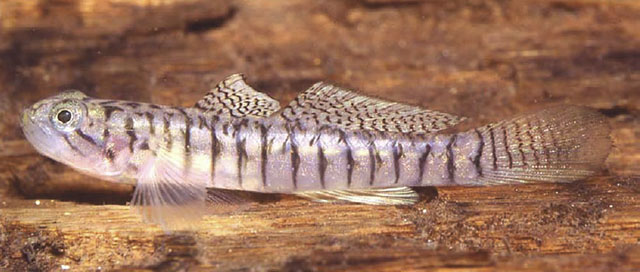| Gobiidae (Gobies), subfamily: Gobionellinae |
| 2.3 cm SL (male/unsexed) |
|
demersal; freshwater |
| Asia: known only from 10 specimens collected in 1939 by an American expedition to the Mamberamo River, Irian Jaya, Indonesia. |
|
Dorsal spines (total): 7-7; Dorsal soft rays (total): 10-10; Anal spines: 1-1; Anal soft rays: 6-7; Vertebrae: 10-16. Distinguished by the following characteristics: first dorsal VI; second dorsal I,7; anal I,6-7, pectoral rays 14-16, segmented caudal rays 17; caudal ray pattern 9/8; branched caudal rays 14-15, in 7/7 pattern; longitudinal scale count 23-25; TRB 7-8; predorsal scale count 2-9; circumpeduncular scales 12; gill rakers on outer face of first arch 2+6, 2+7; vertebrae 10+16; neural spine of second vertebra slightly expanded at tip or all pointed; body slender, compressed (Ref. 80545). |
| Found away from the main flow, around the edge of small pools to about 10 cm depth; seen solitary or in loose groups of 2-4 individuals, generally resting on sand or rocky substrate (Ref. 80545). |
|
Data deficient (DD); Date assessed: 24 February 2020 Ref. (130435)
|
| harmless |
Source and more info: www.fishbase.org. For personal, classroom, and other internal use only. Not for publication.

